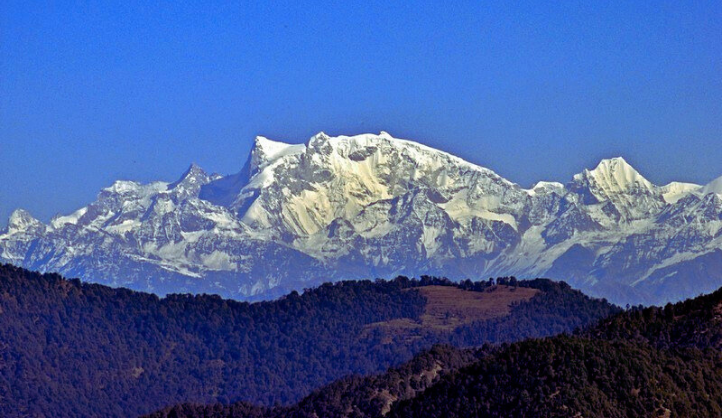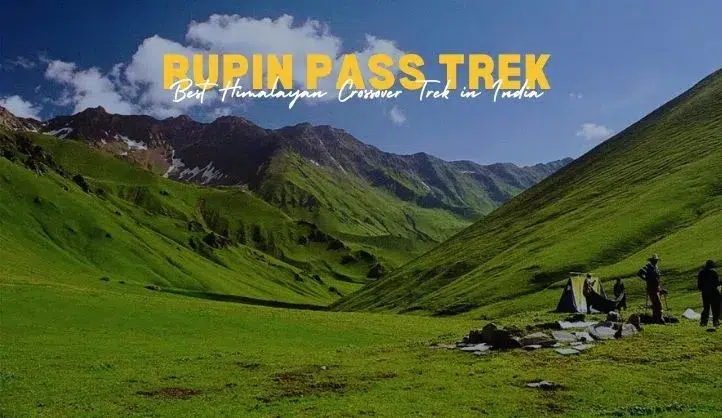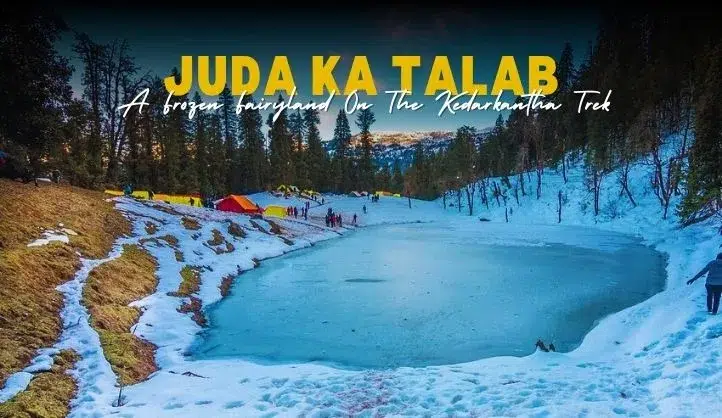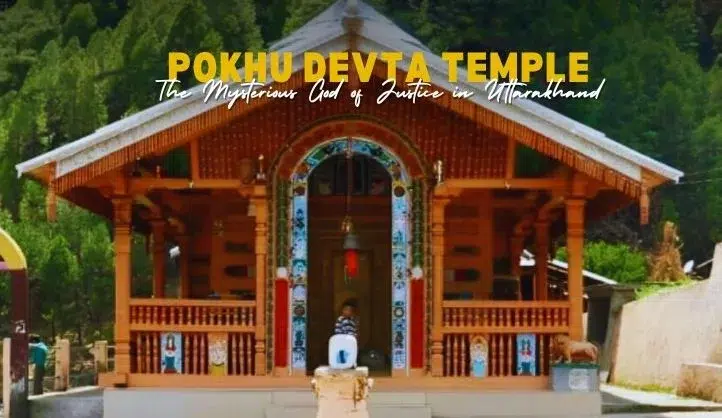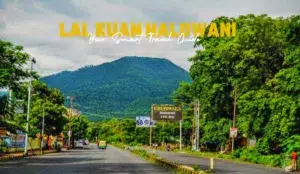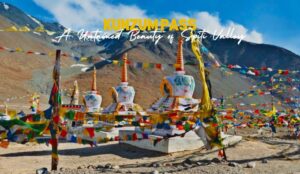“Embark on an epic trek to the heavens! Discover myth, adventure, and beauty at Swargarohini Peak 🏔️🌄 Unveil the path to paradise now!”
About of Swargarohini Peak
Swargarohini Peak is a prominent mountain located in the Garhwal Himalayas of Uttarakhand, India. It is renowned for its stunning beauty, challenging trekking routes, and significant cultural and mythological importance.
Swargarohini Peak, situated majestically in the Garhwal Himalayas of Uttarakhand, India, is not just a physical marvel but a place steeped in myth and mystique. This iconic peak, with its snow-clad summit that seems to touch the sky, holds immense significance in Hindu mythology. The name “Swargarohini” translates to “the path to heaven,” a testament to its mythical association.
In Hindu epic lore, Swargarohini Peak plays a pivotal role. It’s believed to be the celestial staircase that Draupadi, the central female character in the Mahabharata, climbed to reach the heavens. This spiritual connection lends an air of divinity to the peak, attracting pilgrims and trekkers alike.
History of Swargarohini Peak
- Mythological Significance: Swargarohini holds immense importance in Hindu mythology. It is believed that this peak is the pathway to heaven (Swarga) and is associated with the epic tale of the Mahabharata. According to the legend, Draupadi, the wife of the Pandava brothers, ascended to heaven from this peak, leading to its name “Swargarohini” which means “the path to heaven.”
- Trekking and Exploration: Swargarohini Peak has long attracted trekkers and adventure enthusiasts. The region offers various trekking routes of varying difficulty levels. One popular route is the Swargarohini-1 trek, which takes trekkers through picturesque landscapes, dense forests, and high-altitude meadows.
- Scientific Interest: Apart from its cultural and mythological significance, Swargarohini Peak also attracts scientific interest. The geological composition of the area provides insights into the tectonic processes that have shaped the Himalayan range over millions of years.
- Natural Beauty: The peak is surrounded by breathtaking natural beauty. Trekkers are treated to panoramic views of snow-clad mountains, alpine meadows, and pristine glaciers. The landscape is a haven for photographers and nature enthusiasts.
- Challenges and Adventures: Trekking to Swargarohini Peak presents various challenges due to its high altitude and rugged terrain. Trekkers need to be well-prepared and equipped to handle the changing weather conditions and steep ascents. The journey is physically demanding but rewards with unparalleled experiences.
- Local Culture: The region surrounding Swargarohini Peak is inhabited by local communities with distinct cultures and traditions. Interacting with these communities provides trekkers with insights into the local way of life and adds cultural depth to the trekking experience.
- Conservation Efforts: As tourism and trekking activities have increased in the area, there is a growing emphasis on responsible tourism and conservation. Initiatives are being taken to minimize the environmental impact of trekking and promote sustainable practices.
Why Swargarohini Peak is Famous:
- Mythological Significance: The peak holds a special place in Hindu mythology as it is believed to be the path to heaven (Swarga). According to the Mahabharata, Draupadi, the wife of the Pandava brothers, ascended to heaven from this peak, giving it the name “Swargarohini” or “the path to heaven.”
- Trekking Challenges: Swargarohini Peak is famous for offering some of the most challenging trekking routes in the Garhwal Himalayas. Trekkers are drawn to the adventure and thrill of conquering its rugged terrains, steep ascents, and unpredictable weather conditions.
- Scenic Beauty: The peak boasts stunning natural beauty, featuring snow-covered summits, lush alpine meadows, and pristine glaciers. The panoramic views from the top provide a visual feast for nature lovers and photographers alike.
- Cultural Diversity: The region surrounding Swargarohini Peak is inhabited by local communities with unique cultures. The interaction with these communities offers trekkers an opportunity to learn about traditional lifestyles and gain insights into the local way of living.
- Scientific Interest: Beyond its mythological and cultural significance, the peak also attracts scientific interest due to its geological composition. Researchers study the area to understand the complex tectonic processes that have shaped the Himalayan range over time.
Things to Do in Swargarohini Peak:
- Trekking Adventures: Engage in trekking expeditions that cater to various skill levels. The Swargarohini-1 trek is a popular choice, taking trekkers through dense forests, picturesque landscapes, and high-altitude meadows.
- Pilgrimage: For those inclined towards spirituality, the peak holds religious importance. Many undertake the trek as a pilgrimage to pay homage to the legendary ascent of Draupadi.
- Nature Photography: Capture the captivating beauty of the Himalayan landscape. The snow-clad mountains, vibrant flora, and serene valleys provide excellent subjects for photographers.
- Adventure Sports: Beyond trekking, the region offers opportunities for other adventure sports like camping, rock climbing, and snow trekking, enhancing the overall outdoor experience.
- Cultural Immersion: Interact with local communities during the trek to understand their customs, traditions, and daily lives. This interaction adds depth to the journey and fosters cultural appreciation.
- Environmental Awareness: Contribute to responsible tourism by adhering to eco-friendly practices. Leave no trace, respect the local environment, and support conservation efforts.
- Stargazing: Due to the high altitude and clear skies, Swargarohini Peak provides an excellent opportunity for stargazing. The absence of urban light pollution allows for a mesmerizing view of the night sky.
Essential Information about Swargarohini Peak
Swargarohini Peak, renowned for its mythological significance, challenging treks, and stunning landscapes, offers a unique adventure for trekkers and nature enthusiasts.
Key Points to Know about Swargarohini Peak:
- Mythological Importance: Swargarohini Peak holds a central role in Hindu mythology. It is believed to be the path to heaven (Swarga) from where Draupadi, a character from the Mahabharata, ascended to the celestial realm.
- Geographical Location: Situated in the Garhwal Himalayas of Uttarakhand, India, Swargarohini Peak stands tall as a prominent part of the mountain range.
- Trekking Challenges: The peak is famed for its demanding treks that test the endurance and skills of trekkers. Its steep ascents, rugged terrains, and varying weather conditions make it a challenging yet rewarding experience.
- Natural Beauty: Swargarohini’s beauty is unparalleled, featuring snow-clad summits, lush meadows, and glaciers. The breathtaking panoramas offer a feast for the eyes and soul.
- Cultural Encounters: The region is inhabited by local communities with unique cultures. Engaging with these communities provides insights into their traditional lifestyles and adds a cultural dimension to the trek.
- Scientific Interest: Beyond its cultural and spiritual significance, the peak attracts scientific interest due to its geological composition. It offers insights into the geological processes that have shaped the Himalayan region over eons.
How to Reach Swargarohini Peak:
- Nearest Airport: Jolly Grant Airport in Dehradun is the closest airport to Swargarohini Peak. It’s well-connected to major Indian cities.
- Railway Connectivity: Rishikesh and Dehradun are the nearest major railway stations. From there, road transport is available to reach the base camps of the trek.
- Base Camps: The trek to Swargarohini Peak typically starts from two base camps – Sankri and Taluka. Both can be reached via road from Rishikesh.
- Trekking Routes:
- The Swargarohini-1 trek is the most popular route, offering a challenging yet rewarding experience.
- The trek passes through lush forests, alpine meadows, and steep ascents.
- Trekkers can enjoy panoramic views of surrounding peaks and valleys.
- Trek Difficulty: The trek demands physical fitness and preparation due to the high altitude and strenuous paths. Acclimatization is crucial to avoid altitude sickness.
- Local Guides and Permits: Hiring local guides is advisable for navigation and safety. Permits from the forest department are often required for trekking in the region.
- Best Time to Visit: The ideal time for trekking is during the pre-monsoon (May-June) and post-monsoon (September-October) months when the weather is favorable.
- Equipment and Essentials: Trekkers must be equipped with proper trekking gear, clothing, sleeping bags, and first aid kits. It’s important to pack appropriately for changing weather conditions.
- Responsible Trekking: As the region is ecologically sensitive, practicing responsible trekking by following Leave No Trace principles is vital to preserve the environment.
- Safety Precautions: Adequate physical fitness training, acclimatization, and staying hydrated are essential for a safe trekking experience.
Travel Tips for Swargarohini Peak:
Visiting Swargarohini Peak requires careful planning and preparation. Here are some essential travel tips to ensure a safe and enjoyable journey:
- Physical Fitness: The trek to Swargarohini Peak involves challenging terrains and high altitudes. Prior physical fitness training and regular exercise will help you endure the trek comfortably.
- Acclimatization: Acclimatize properly by spending a day or two at lower altitudes before ascending to higher altitudes. This helps prevent altitude sickness and ensures a smoother trekking experience.
- Pack Light: Pack only essential items like comfortable clothing, sturdy trekking shoes, rain gear, a warm jacket, and a good-quality sleeping bag. Avoid overpacking to reduce the weight you need to carry.
- Hydration and Nutrition: Carry an adequate supply of water and energy-boosting snacks. Staying hydrated and well-nourished is crucial for maintaining energy levels during the trek.
- Local Guides: It’s advisable to hire experienced local guides who are familiar with the terrain, weather conditions, and routes. They can provide valuable insights and ensure your safety.
- Permits: Obtain the necessary permits from the local authorities or forest department before starting the trek. Complying with regulations is essential for a hassle-free journey.
- Safety Gear: Carry a basic first aid kit, personal medications, and any necessary medical supplies. Additionally, a map, compass, or GPS device can be helpful for navigation.
- Responsible Trekking: Follow Leave No Trace principles to minimize your environmental impact. Respect the local culture, avoid littering, and stay on designated paths to preserve the ecosystem.
- Communication: Inform someone reliable about your trekking plans, including your itinerary and expected return date. This is important for safety, especially in case of emergencies.
- Weather Awareness: Be prepared for unpredictable weather changes in the mountains. Pack layers of clothing to adjust to varying temperatures.
Best Time to Visit Swargarohini Peak:
The timing of your visit greatly influences your trekking experience. The best time to explore Swargarohini Peak is during the following periods:
- Pre-Monsoon (May to June): This is an excellent time for trekking due to clear skies and pleasant weather. The snow has mostly melted, offering better access to trails and panoramic views.
- Post-Monsoon (September to October): After the monsoon season, the region becomes lush and vibrant. The weather is relatively stable, and the visibility is excellent for capturing breathtaking vistas.
- Avoid Monsoon (July to August): Monsoon brings heavy rainfall, making the trails slippery and increasing the risk of landslides. It’s advisable to avoid trekking during this period.
- Winter (November to April): Harsh winter conditions with heavy snowfall make the trekking routes extremely challenging and risky. Most trails are inaccessible due to snow accumulation.
- Consider Altitude: Keep in mind that higher altitudes experience colder temperatures year-round. Check the expected weather conditions for your specific trekking route and time.
Eating Options Near Swargarohini Peak:
Exploring the dining options around Swargarohini Peak can enhance your trekking experience. Here are some recommendations for places to eat:
- Local Eateries in Base Camps: The base camps of Sankri and Taluka offer small local eateries that serve traditional Indian meals. These eateries provide nourishing meals for trekkers to refuel before or after their trekking expeditions.
- Packed Meals from Guides: Many trekking packages include meals prepared by guides or trekking companies. These packed meals often consist of energy-rich foods like sandwiches, fruits, nuts, and snacks.
- Personal Provisions: Consider carrying your own lightweight food items such as energy bars, dried fruits, nuts, and instant noodles. These can be convenient for quick bites during the trek.
- Home-stays and Local Villages: If you’re staying in home-stays or visiting local villages during your trek, you might have the chance to enjoy homemade local cuisine. This can provide an authentic culinary experience.
- Portable Cooking Equipment: Some trekkers prefer to carry portable cooking equipment like portable stoves. This allows them to prepare simple meals at their convenience using ingredients they bring along.
Nearby Places to Explore around Swargarohini Peak:
While visiting Swargarohini Peak, you can also explore the nearby attractions and destinations. Here are some places to consider:
- Ruinsara Tal: A stunning high-altitude lake near the base camp of Ruinsara Valley. It offers a serene environment and panoramic views of the surrounding peaks.
- Har Ki Dun Valley: A picturesque valley known for its lush meadows and vibrant flora. It’s a great extension to your Swargarohini trek if you have additional time.
- Osla Village: This charming village is known for its wooden architecture, ancient temples, and cultural heritage. It’s often a stop on the way to Swargarohini Peak.
- Harkidun Temple: Situated in Osla, this temple holds significance in local mythology and offers insights into the spiritual beliefs of the region.
- Sankri Village: The gateway to many treks, Sankri is a picturesque village surrounded by snow-capped peaks. It’s a great place to experience local culture and traditions.
- Taluka Village: Another starting point for the Swargarohini trek, Taluka is a small village with breathtaking views and a tranquil atmosphere.
- Yamunotri: If time allows, you can consider extending your trip to the Yamunotri temple, a revered pilgrimage site dedicated to the Yamuna River.
- Gangotri: Similarly, you can plan a visit to Gangotri, another significant pilgrimage site and the origin of the Ganges River.
Conclusion:
Swargarohini Peak, with its intriguing mythological significance, demanding treks, and captivating natural beauty, stands as a remarkable destination for adventurers, pilgrims, and nature enthusiasts alike. The peak’s allure lies in its blend of spiritual heritage, challenging trails, and breathtaking vistas. From traversing the rugged terrain to admiring the snow-clad summits and lush meadows, every moment spent exploring Swargarohini Peak is a testament to the harmonious blend of nature and culture. By adhering to responsible trekking practices and proper planning, visitors can embark on an unforgettable journey to discover the splendors of this Himalayan gem.
Frequently Asked Questions (FAQ) about Swargarohini Peak:
1. Is Swargarohini Peak suitable for beginners?
- While Swargarohini Peak offers stunning views and a unique trekking experience, it’s known for its challenging terrain and high altitudes. It’s better suited for experienced trekkers with good physical fitness.
2. What is the best time to trek to Swargarohini Peak?
- The best times are pre-monsoon (May-June) and post-monsoon (September-October). These months offer favorable weather conditions with clear skies and manageable temperatures.
3. Are guides necessary for the Swargarohini trek?
- Hiring local guides is recommended for safety and navigation. They are familiar with the routes, weather changes, and can provide insights into the local culture.
4. Can I do the Swargarohini trek solo?
- While solo trekking is possible, it’s safer and more enjoyable to trek in a group, especially considering the challenging nature of the terrain and the need for local expertise.
5. Are there accommodation options on the trek?
- Accommodation is available in the form of tents or guesthouses along the trekking route. It’s advisable to check with trek organizers or guides regarding the specific arrangements.

